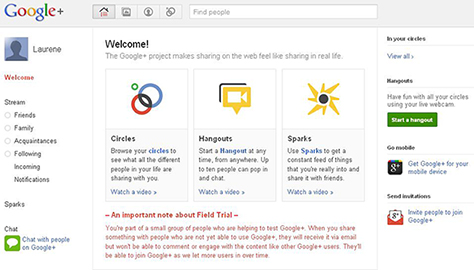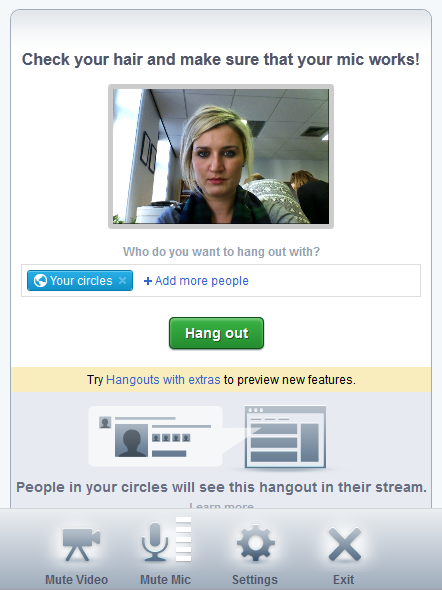
What’s the Unique Value Proposition of Google+?
Of course, how people use this new Google+ platform is inevitably up to how they choose to use it, but Google does not appear to be communicating a clear, unique selling point that would encourage me to invest the time in uploading my personal content and information to this site. While the SEO benefits of using Google+ may be apparent to many business users, I’m not yet convinced of the application’s instant appeal to individuals engaging with the social network for their personal use.
My quick poll of colleagues and friends suggests that I’m not alone in finding the new platform slightly underwhelming at present. However, according to Google CEO Larry Page’s October 13, 2011 report, Google+ already had more than 40 million users. In comparison, Facebook, which was founded in 2004, now has more than 750 million users. From this perspective, it’s no wonder that Facebook is currently a more attractive prospect for social networking. Ironically, in the first week after the Google+ launch, Facebook creator Mark Zuckerberg had the highest number of followers on Google+.
Is Google+ a defiant answer to Facebook—an attempt to rival the social networking giant? To allow people to use Google+ for both work and personal purposes, Google has tried to combine features of Huddle, Facebook, LinkedIn, and Twitter to provide a one-stop shop.
Creating Circles in Google+
The introduction of Circles lets users group their connections so they can control who they share certain information with. (Facebook actually has a similar feature and automatically groups some of its users’ connections based on information users have provided about their relationships or geographic location.)
The Circles page, shown in Figure 2, displays a list of people you may know, similar to that on Facebook. However, since Google+ does not yet have the volume of users that Facebook does, the suggestions aren’t of great relevance to me. The intuitive drag-and-drop functionality lets you add your connections to predefined groups, but if this list became extensive, it would take a significant amount of time to organize your connections.

While I agree that most people separate their connections into different groups in real life, doing this is on a social network could be a bit laborious. It’s one of the reasons we already have different social networks—LinkedIn for professional connections, Facebook for friends, and Huddle for collaborative work. Asking users to create this kind of organization on a single network might be overestimating the patience of Web users—not to mention the task of migrating content from existing popular sites in which users have invested their time.
Plus, when you combine all of your social networks into one by the mere click of a button, you may end up unintentionally sharing information with certain groups. A case in point occurred when a Google engineer posted an update to his Google+ account that he had intended for internal viewing only. Instead, he accidentally posted it to his 2000 or more followers on the social networking site. While confidentiality is not always a huge issue, this post contained negative and damaging comments about the company, in which he stated that his employers did not understand social platforms and that “Google’s biggest blunder … is that it didn’t emulate Facebook’s plan of building an entire constellation of products by allowing other people to do the work.”


